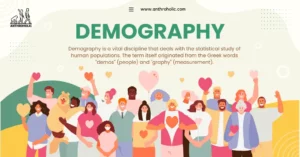AI Answer Evaluation Platform Live Now. Try Free Answer Evaluation Now
Adolescence
Adolescence is a stage between childhood and adulthood that typically occurs between the ages of 13 and 19. Significant physical, emotional, cognitive, and social changes occur during this phase. Puberty causes physical growth and sexual maturation, as well as critical brain development that improves reasoning and critical thinking. Emotional identity and self-concept become paramount, frequently resulting in a desire for independence and experimentation. Peer relationships and social acceptance are becoming increasingly important, influencing behavior and values. Risk-taking and emotional instability are common challenges that can contribute to personal growth. Adolescents benefit from supportive environments as they progress through this difficult stage toward adulthood.

The Biological Aspects of Adolescence
Physical Growth and Development
A marked characteristic of adolescence is rapid physical growth and sexual maturation. Notably, this involves significant changes, such as growth spurts, pubertal changes, and the development of secondary sexual characteristics [1].
Growth Spurts
Typically commencing between 10-14 years in girls and 12-16 years in boys, growth spurts involve an accelerated increase in height and weight. The peak height velocity (PHV), a period of maximum growth, can reach up to 8-12 cm/year in girls and 10-14 cm/year in boys [2].
Pubertal Changes
Puberty, commencing earlier in girls (around 10-11 years) than boys (around 11-12 years), is characterized by the maturation of the reproductive system and the onset of secondary sexual characteristics. This encompasses breast development in girls, testicular enlargement in boys, and pubic hair growth in both [3].
Brain Development
Adolescence is a period of significant brain maturation, particularly in the prefrontal cortex, responsible for cognitive processes such as decision-making, impulse control, and emotional regulation [4].
Neurological Changes
During adolescence, brain development includes synaptic pruning, myelination, and a heightened period of neural plasticity [5]. These changes may contribute to the typical adolescent behaviors, like risk-taking and exploration, which are necessary for individual development and societal integration.
Adolescent Behaviors and Socialization
Risk-taking and Exploration
Adolescents are often inclined to experiment with new behaviors and experiences. This risk-taking behavior has been hypothesized to serve an evolutionary purpose – promoting independence, social status, and novel learning experiences.
Social Integration
Peer interactions and approval gain unprecedented importance during adolescence. The ability to form and maintain relationships, understand social hierarchies, and manage conflict is integral to successful integration into adult society.
Health Challenges During Adolescence
Adolescence is a period often marked by an increase in health-related problems, both physically and mentally.
Physical Health Problems
Some of the common physical health problems during adolescence include obesity, malnutrition, acne, and problems related to sexual and reproductive health. The causes of these problems range from hormonal changes to unhealthy lifestyles.
Obesity and Malnutrition
| Risk Factors for Obesity | Risk Factors for Malnutrition |
|---|---|
| Sedentary Lifestyle | Poverty |
| Unhealthy Diet | Insufficient Diet |
| Genetic Factors | Disease |
| Socio-economic Factors | Inadequate Health Services |
| Emotional Factors | Environmental Factors |
Mental Health Problems
Mental health problems, such as anxiety, depression, and eating disorders, often surface during adolescence. Factors such as genetic predisposition, environmental stressors, and hormonal changes can contribute to these issues.
Depression and Anxiety
| Risk Factors for Depression | Risk Factors for Anxiety |
|---|---|
| Family history of depression | Chronic physical illness |
| Traumatic life events | Family history of mental health disorders |
| Substance misuse | Childhood abuse or trauma |
| Physical illness | Personality traits like perfectionism |
Navigating Adolescence: The Role of Society
Education
Education plays a crucial role in helping adolescents navigate this challenging phase. Comprehensive education, encompassing academic knowledge, emotional intelligence, and sexual health awareness, can equip adolescents with the tools to manage the physical and emotional changes they experience.
Support Systems
Parents, caregivers, teachers, and peers constitute the essential support systems for adolescents. They can provide guidance, emotional support, and resources, helping adolescents cope with the challenges and stressors they may face.
Community Programs
Community programs targeting physical activity, nutrition, mental health, and other relevant areas can provide critical resources and interventions to support adolescent health and well-being.
Anthropological Interpretation
Biological anthropology interprets these changes in adolescence within an evolutionary and cross-cultural context. This perspective acknowledges the role of ecological factors, such as diet and disease, in shaping adolescent growth and behavior.
Evolutionary Context
Many biological changes during adolescence, such as risk-taking behaviors and peer-oriented socialization, can be understood from an evolutionary perspective. For instance, increased risk-taking might have offered a survival advantage in our evolutionary past by facilitating the exploration of new territories and resources.
Cross-cultural Perspectives
Cross-cultural studies highlight the influence of societal factors on adolescence. For instance, societal expectations and norms can significantly impact the onset and progression of puberty, adolescent behaviors, and social roles .
Conclusion
Adolescence is a period of dramatic changes that significantly impacts an individual’s physical, emotional, and social development. Biological anthropology offers a holistic view of adolescence, considering genetic, physiological, and ecological factors in tandem with societal and cultural influences. Such perspectives not only enrich our understanding of adolescence but also emphasize the importance of a multidisciplinary approach in tackling adolescent health and development issues.
References
[1] Marshall, W.A., & Tanner, J.M. (1969). Variations in pattern of pubertal changes in girls. Archives of Disease in Childhood, 44, 291-303.
[2] Tanner, J.M. (1989). Foetus into Man. Cambridge, MA: Harvard University Press.
[3] Herman-Giddens, M.E. (2006). Recent data on pubertal milestones in United States children: the secular trend toward earlier development. International Journal of Andrology, 29, 241-246.
[4] Blakemore, S.J., & Choudhury, S. (2006). Development of the adolescent brain: implications for executive function and social cognition. Journal of Child Psychology and Psychiatry, 47, 296-312.
[5] Giedd, J.N. (2004). Structural magnetic resonance imaging of the adolescent brain. Annals of the New York Academy of Sciences, 1021, 77-85.




